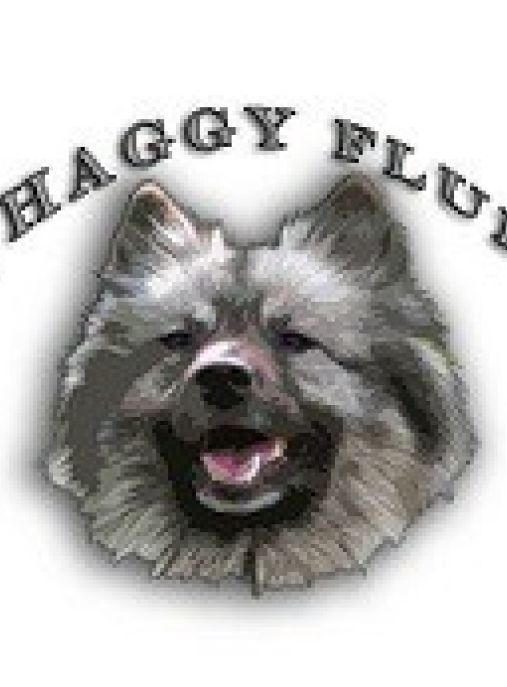The Nova Scotia Duck Tolling Retriever is a versatile and intelligent dog breed that hails from the province of Nova Scotia, Canada. Known for its striking appearance and exceptional hunting skills, this breed has gained popularity not only as a working dog but also as a beloved family pet. With its unique ability to lure and retrieve waterfowl, the Nova Scotia Duck Tolling Retriever has become a favorite among hunters and outdoor enthusiasts.
The history of the Nova Scotia Duck Tolling Retriever dates back to the early 19th century. It is believed that the breed was developed by crossing various retrievers, including the Chesapeake Bay Retriever, Golden Retriever, and Cocker Spaniel, with local farm dogs and possibly even the Norwegian Elkhound. The goal was to create a dog that could lure and retrieve ducks from the water, hence the name "tolling" retriever.
According to the FCI (Fédération Cynologique Internationale) typology, the Nova Scotia Duck Tolling Retriever belongs to Group 8: Retrievers, Flushing Dogs, and Water Dogs. Within this group, it falls under Section 1: Retrievers. This classification highlights the breed's primary purpose as a skilled retriever, both on land and in water.
While originally bred for hunting, the Nova Scotia Duck Tolling Retriever has also found its place as a loving companion and family pet. These dogs are known for their friendly and outgoing nature, making them excellent with children and other pets. They thrive in an active household where they can receive plenty of mental and physical stimulation.
In terms of physical characteristics, the Nova Scotia Duck Tolling Retriever is a medium-sized dog with a well-muscled body. Males typically stand between 18 to 21 inches (45 to 53 cm) at the shoulder, while females are slightly smaller, ranging from 17 to 20 inches (43 to 51 cm). The breed's weight varies between 35 to 50 pounds (16 to 23 kg), with males generally being heavier than females.
One notable feature of the Nova Scotia Duck Tolling Retriever is its beautiful double coat, which consists of a dense, water-repellent outer coat and a soft, insulating undercoat. The coat comes in various shades of red and orange, with white markings on the chest, feet, and tail tip. Regular grooming is necessary to maintain the coat's condition and prevent matting.
In terms of lifespan, the Nova Scotia Duck Tolling Retriever typically lives between 10 to 14 years. However, with proper care, some individuals have been known to live even longer. Regular exercise, a balanced diet, and routine veterinary check-ups are essential to ensure the overall health and well-being of this breed.
One interesting fact about the Nova Scotia Duck Tolling Retriever is its unique hunting technique called "tolling." This involves the dog playfully running, jumping, and retrieving objects along the shoreline to attract the curiosity of waterfowl. Once the ducks are lured within range, the dog remains still, allowing the hunter to take a shot. The dog then retrieves the downed birds from the water.
Another fascinating aspect of this breed is its intelligence and trainability. Nova Scotia Duck Tolling Retrievers excel in various dog sports, including obedience, agility, and tracking. They are quick learners and thrive on mental stimulation, making them a joy to train.
In conclusion, the Nova Scotia Duck Tolling Retriever is a remarkable breed with a rich history and exceptional hunting abilities. Whether as a skilled retriever in the field or a loving companion at home, these dogs bring joy and companionship to their owners. With their striking appearance, friendly temperament, and versatile skills, it's no wonder that the Nova Scotia Duck Tolling Retriever has captured the hearts of dog enthusiasts worldwide.
The Nova Scotia Duck Tolling Retriever, often referred to as the Toller, is a medium-sized, intelligent, and energetic breed known for its unique hunting skills and friendly nature. With their striking appearance and versatile abilities, Tollers have gained popularity as both working dogs and beloved family pets. In this text, we will delve into the character of Nova Scotia Duck Tolling Retrievers, their behavior, and how to raise and train them.
Tollers are highly intelligent dogs with a strong desire to please their owners. They are known for their exceptional problem-solving skills and quick learning abilities. This breed thrives on mental stimulation and requires regular exercise to keep them physically and mentally fit. Tollers are happiest when they have a job to do, whether it's retrieving objects, participating in dog sports, or engaging in interactive play with their owners.
One of the most distinctive traits of Tollers is their incredible ability to lure and toll ducks. They were originally bred in Nova Scotia, Canada, to attract waterfowl by playing along the shoreline, captivating the birds' attention and luring them within range of hunters. This unique hunting technique requires Tollers to be agile, patient, and highly focused. Although many Tollers today no longer work as hunting dogs, they still possess the instincts and drive associated with their original purpose.
In terms of temperament, Tollers are known for being friendly, affectionate, and outgoing. They form strong bonds with their families and are generally good with children and other pets when properly socialized from an early age. Tollers are not typically aggressive or overly protective, but they will alert their owners to any potential threats with their distinctive, high-pitched bark.
To raise a Toller successfully, it is crucial to provide them with plenty of mental and physical stimulation. Daily exercise, such as long walks, runs, or play sessions, is essential to prevent boredom and destructive behavior. Tollers also enjoy activities that engage their natural retrieving instincts, such as fetch or agility training. Mental stimulation can be achieved through puzzle toys, obedience training, or participating in dog sports like obedience trials or dock diving.
Training a Toller requires patience, consistency, and positive reinforcement techniques. Tollers respond well to reward-based training methods, such as treats, praise, and play. They are sensitive dogs and do not respond well to harsh or punitive training methods. Early socialization is crucial to ensure they grow up to be well-rounded and confident dogs. Exposing them to various environments, people, and other animals from a young age will help them develop into friendly and well-behaved companions.
It is important to note that Tollers can be prone to separation anxiety if left alone for extended periods. They thrive on human companionship and may become destructive or develop behavioral issues if left alone for too long. Therefore, it is recommended to gradually introduce them to alone time and provide them with mental stimulation, such as puzzle toys or interactive feeders, to keep them occupied when alone.
In conclusion, Nova Scotia Duck Tolling Retrievers are intelligent, energetic, and friendly dogs with a unique hunting heritage. They require plenty of mental and physical stimulation to thrive and make excellent companions for active individuals or families. With proper training, socialization, and love, Tollers can become well-behaved, loyal, and affectionate members of the family.
The Nova Scotia Duck Tolling Retriever, also known as the Toller, is a medium-sized sporting dog breed known for its intelligence, agility, and playful nature. Caring for a Toller requires attention to their physical and mental needs, as well as providing a loving and stimulating environment. Here are some tips on how to care for Nova Scotia Duck Tolling Retrievers:
1. Exercise: Tollers are an active breed that requires regular exercise to maintain their physical and mental well-being. Aim for at least one hour of exercise daily, which can include walks, runs, swimming, or playing fetch. Engaging in activities that stimulate their natural retrieving instincts is highly recommended.
2. Mental Stimulation: Tollers are intelligent dogs that thrive on mental challenges. Provide them with puzzle toys, interactive games, and training sessions to keep their minds sharp. Mental stimulation helps prevent boredom and destructive behaviors.
3. Grooming: Tollers have a dense double coat that requires regular brushing to prevent matting and remove loose hair. Brush them at least once a week, and more frequently during shedding seasons. They are moderate shedders, so be prepared for some hair around the house. Regular nail trims, teeth brushing, and ear cleaning are also essential.
4. Socialization: Early socialization is crucial for Tollers to develop into well-rounded dogs. Expose them to various people, animals, and environments from a young age. This helps them become confident and friendly adults. Enroll them in puppy classes or obedience training to enhance their social skills.
5. Training: Tollers are highly trainable and eager to please. Use positive reinforcement techniques such as treats, praise, and play to motivate them during training sessions. Consistency, patience, and firmness are key to successful training. They excel in obedience, agility, and other dog sports.
6. Health Care: Regular veterinary check-ups, vaccinations, and preventive treatments are essential for maintaining your Toller's health. They are generally a healthy breed, but like any dog, they can be prone to certain genetic conditions such as hip dysplasia, progressive retinal atrophy, and autoimmune disorders. Responsible breeders conduct health tests on their breeding dogs to minimize the risk of passing on these conditions.
7. Diet: Provide a balanced and nutritious diet appropriate for your Toller's age, size, and activity level. Consult with your veterinarian to determine the best diet plan for your dog. Avoid overfeeding, as Tollers can be prone to weight gain, which can lead to joint problems.
What NOT to do:
1. Neglect exercise: Lack of exercise can lead to behavioral issues and obesity in Tollers. Ensure they receive adequate physical activity to prevent boredom and destructive behaviors.
2. Leave them alone for long periods: Tollers are social dogs that thrive on human companionship. Leaving them alone for extended periods can lead to separation anxiety and destructive behaviors. If you have to be away, provide them with mental stimulation and consider hiring a dog walker or using doggy daycare.
3. Use harsh training methods: Tollers respond best to positive reinforcement training methods. Avoid using harsh punishments or physical force, as it can damage their trust and hinder their learning.
4. Ignore their grooming needs: Neglecting their grooming needs can lead to matting, skin issues, and discomfort. Regular brushing and grooming sessions are crucial for their well-being.
By following these tips, you can provide the best care for your Nova Scotia Duck Tolling Retriever, ensuring they lead a happy, healthy, and fulfilling life.
The Nova Scotia Duck Tolling Retriever, often referred to as the Toller, is a strikingly beautiful breed known for its unique coat color. The common color of these dogs is a rich and vibrant shade of reddish-orange, often described as a deep copper or fiery rust. This distinctive hue is one of the defining characteristics of the breed and adds to its overall allure.
The Toller's coat is dense, water-repellent, and weather-resistant, making it well-suited for its original purpose as a hunting companion. The color of their fur is a result of careful breeding and genetics, which have been refined over generations to achieve the desired shade. The intensity of the color can vary slightly from dog to dog, with some Tollers displaying a more intense red hue, while others may have a slightly lighter or more golden appearance.
When the sunlight hits the Toller's coat, it seems to come alive with a warm and radiant glow. The reddish-orange color is most prominent on the dog's back, sides, and tail, while the chest, belly, and underside of the tail may have lighter or cream-colored fur. This contrast adds depth and dimension to the overall appearance of the dog, enhancing its visual appeal.
The Toller's coat is not only visually stunning but also serves a practical purpose. The reddish-orange color helps the dog blend in with its surroundings when working in the field, particularly during the fall season when the landscape is adorned with similar hues. This camouflage allows the Toller to approach waterfowl undetected, making it an excellent retriever.
In addition to their striking coat color, Nova Scotia Duck Tolling Retrievers often have white markings on their face, chest, and paws. These white patches further accentuate the reddish-orange fur, creating a beautiful contrast. The white markings can vary in size and shape, with some Tollers having small patches, while others may have more extensive areas of white.
It is worth noting that the Toller's coat requires regular grooming to maintain its lustrous appearance. Brushing their fur helps remove loose hairs and keeps their coat healthy and shiny. Additionally, regular bathing and occasional trimming may be necessary to keep their coat in optimal condition.
In conclusion, the common color of Nova Scotia Duck Tolling Retriever dogs is a captivating reddish-orange shade, reminiscent of a deep copper or fiery rust. This unique coat color, combined with their white markings, adds to the breed's overall beauty and charm. Whether in the field or as a beloved family pet, the Toller's striking appearance is sure to turn heads and capture hearts.
The Nova Scotia Duck Tolling Retriever, also known as the Toller, is a medium-sized breed known for its intelligence, agility, and playful nature. While generally a healthy breed, Tollers are prone to certain health issues that owners should be aware of to ensure their well-being.
One of the most common health concerns in Tollers is hip dysplasia. This condition occurs when the hip joint doesn't develop properly, leading to arthritis and mobility issues. Responsible breeders perform hip evaluations on their breeding dogs to reduce the risk of passing on this condition. Regular exercise, a balanced diet, and maintaining a healthy weight can also help minimize the impact of hip dysplasia.
Another prevalent health issue in Tollers is progressive retinal atrophy (PRA). PRA is a degenerative eye disease that leads to vision loss and, in severe cases, blindness. Regular eye examinations by a veterinary ophthalmologist can help detect PRA early on, allowing for appropriate management and care. Genetic testing is available to identify carriers of the PRA gene, enabling responsible breeding practices to reduce the prevalence of this condition.
Tollers are also prone to autoimmune diseases, including autoimmune thyroiditis and immune-mediated hemolytic anemia. Autoimmune thyroiditis affects the thyroid gland, leading to hormonal imbalances that can cause weight gain, lethargy, and skin issues. Regular thyroid function tests can help identify this condition, and lifelong medication can manage it effectively. Immune-mediated hemolytic anemia is a condition where the immune system attacks and destroys red blood cells. Prompt veterinary attention is crucial for diagnosis and treatment, which may involve immunosuppressive drugs.
Dental health is another aspect of Toller care that should not be overlooked. Regular brushing, dental chews, and professional cleanings can help prevent periodontal disease, which can lead to tooth loss and other health complications. Additionally, maintaining a healthy diet and providing appropriate chew toys can help prevent dental issues.
To ensure the overall health of a Toller, regular veterinary check-ups are essential. Vaccinations, parasite prevention, and routine blood work can help detect any underlying health issues early on. A balanced diet, appropriate exercise, and mental stimulation are crucial for their well-being. Tollers are an active breed that requires regular exercise to prevent obesity and keep them mentally stimulated. Daily walks, playtime, and activities such as agility or obedience training can help meet their exercise needs.
Lastly, responsible breeding practices play a significant role in maintaining the health of the Toller breed. Reputable breeders prioritize genetic testing to identify potential health risks and work towards breeding dogs with good overall health. Prospective Toller owners should seek out breeders who prioritize health testing and are transparent about the health history of their breeding dogs.
In conclusion, while the Nova Scotia Duck Tolling Retriever is generally a healthy breed, they are prone to certain health issues such as hip dysplasia, progressive retinal atrophy, autoimmune diseases, and dental problems. Regular veterinary care, genetic testing, a balanced diet, appropriate exercise, and responsible breeding practices are all essential for maintaining the health and well-being of these beautiful and intelligent dogs.
The Nova Scotia Duck Tolling Retriever is a beautiful and intelligent breed known for its agility, hunting skills, and friendly nature. To ensure the overall health and well-being of your furry companion, it is crucial to provide them with a balanced and nutritious diet. Proper nutrition plays a vital role in maintaining their energy levels, promoting healthy growth, and preventing potential health issues.
When it comes to feeding a Nova Scotia Duck Tolling Retriever, it is important to consider their age, weight, activity level, and any specific dietary requirements. Puppies require a diet that supports their rapid growth and development, while adult dogs need a well-balanced diet to maintain their optimal weight and energy levels.
A high-quality commercial dog food that is specifically formulated for active breeds is a good starting point. Look for a brand that uses real meat as the primary ingredient, as this provides essential proteins for muscle development. Avoid dog foods that contain excessive fillers, artificial preservatives, and by-products, as these can be detrimental to your dog's health.
It is recommended to feed your Nova Scotia Duck Tolling Retriever twice a day, dividing their daily portion into two equal meals. This helps prevent bloating and aids in digestion. The exact amount of food will vary depending on your dog's age, weight, and activity level. Consult with your veterinarian to determine the appropriate portion size for your specific dog.
In addition to commercial dog food, you can supplement your dog's diet with healthy and nutritious foods. Lean meats like chicken, turkey, or fish can be cooked and added to their meals occasionally. These provide additional protein and essential fatty acids. Fruits and vegetables such as carrots, apples, and green beans can also be given as treats or mixed into their food to provide vitamins, minerals, and fiber.
While it is important to provide a balanced diet, there are certain foods that should be avoided as they can be toxic to dogs. These include chocolate, grapes, raisins, onions, garlic, avocados, and foods containing xylitol (a sugar substitute). Additionally, be cautious with fatty foods, as they can lead to pancreatitis in dogs.
Proper hydration is also crucial for your Nova Scotia Duck Tolling Retriever's health. Always ensure that fresh and clean water is readily available for them to drink throughout the day.
Regular exercise is essential for this active breed, as it helps maintain their weight, muscle tone, and mental stimulation. A combination of daily walks, playtime, and mental exercises will keep them happy and healthy.
Lastly, it is important to monitor your dog's weight and body condition regularly. Adjust their food portions accordingly to prevent obesity or malnutrition. If you notice any sudden changes in appetite, weight, or overall health, consult with your veterinarian to rule out any underlying health issues.
In conclusion, providing a well-balanced and nutritious diet is essential for the overall health and well-being of your Nova Scotia Duck Tolling Retriever. Choose high-quality commercial dog food, supplement with healthy additions, and avoid toxic foods. Regular exercise, proper hydration, and monitoring their weight will ensure a happy and healthy life for your beloved companion.











